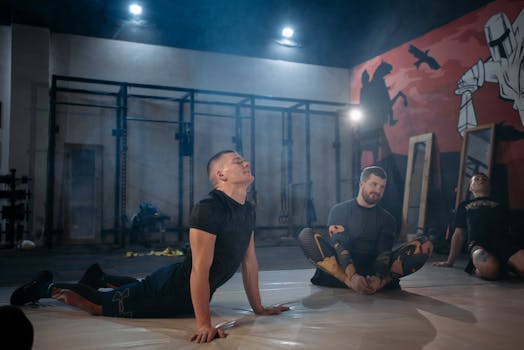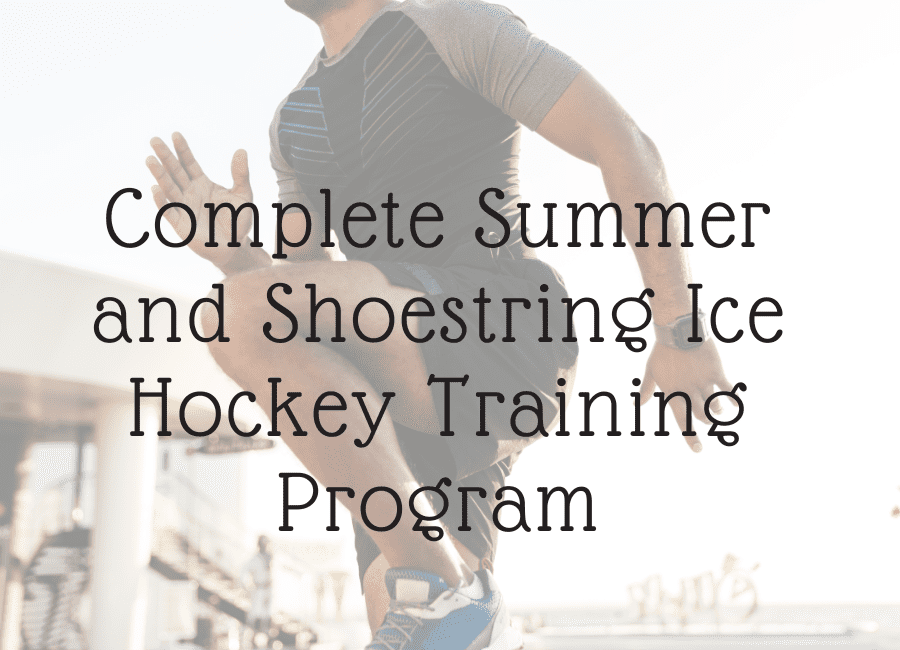How we rehabbed my player over the summer months
Over the summer, my son will focus on rehabbing his way back from some minor injury and illness to prepare for the Hockey season. He aims to unleash his potential and take his game to new heights by utilizing the latest training programs and techniques. From explosive speed workouts to injury prevention strategies, his training routine encompasses everything needed to elevate his performance, and you can too. Whether rehabbing from a setback or aiming for a higher level of play, if you are dedicated to following a diverse training routine you can become the player you have always aspired to be.
My son has had a tough time lately with some minor injuries and repeated respiratory infections that have made his asthma worse. These setbacks have pushed him back a bit, but he’s determined to make a strong comeback for the new hockey season in the fall. We’re using the summer to focus on his rehabilitation, even though we’re working with a tight budget. I want to share our plan and show how you can do the same for your athlete.
First, we’re setting up a workout routine that includes cardio and strength training. We figured we could get the most out of a combination of Professional Physical Therapy, Athletic Training, Hockey Skill Training, Nutrition, and follow-up with medical specialists.
Next, we’re making use of local resources. We have manageable low-cost access to the YMCA which has a wonderful swimming pool. Swimming is especially good because it helps build lung capacity without the harsh impact on his joints. He can also take advantage of the public parks for walking, running, and agility drills.

Nutrition is another big part of his recovery. We’re focusing on a balanced diet with plenty of vegetables, lean proteins, and whole grains. We will institute high-protein snacks in between his meals. This helps keep his immune system strong. We’re also making sure he stays hydrated, which is crucial for managing asthma.
Rest is just as important as exercise. We’ve set up a sleep schedule to ensure he gets enough rest each night, and we’re keeping stress levels down with some fun, relaxing activities like reading and family game nights and hanging with friends to create a healthy balance.
Lastly, we’re staying on top of his asthma management. This was exacerbated by repeated respiratory infections in a short period. Regular check-ups with specialists with his doctors and sticking to his medication plan are non-negotiable parts of our routine.
Even on a shoestring budget, it’s possible to prepare for the upcoming season with determination and the right resources. If you’re in a similar situation, look into what your community offers, focus on balanced nutrition, ensure plenty of rest, and always stay on top of any medical needs. With some planning and effort, your child can make a strong comeback too.
Understanding the Importance of Off-Ice Training Sessions
To truly transform your performance on the ice, it’s essential to understand the importance of off-ice training sessions. While on-ice practices are crucial for honing specific skills and tactics, off-ice training plays a significant role in developing overall athleticism, strength, and conditioning.
These off-ice sessions are designed to target different muscle groups, improve endurance, and enhance speed and agility – all of which are essential components of a well-rounded ice hockey player. By incorporating off-ice training into your routine, you can build a solid foundation.
Some ones we have used:
Incorporating Explosive Speed and Agility Workouts

Now, the time to bring on explosive speed training and agility workouts into your off-ice training regimen is crucial. This is crucial to being the fastest most agile on the ice. One must incorporate activation work and dynamic mobility training.
These workouts are designed to improve your quickness, reaction time, and overall mobility on the ice. By including drills focusing on explosive movements and change of direction, you can enhance your ability to outmaneuver opponents and make swift plays during games. Look for workouts that will challenge you with a mix of speed, quickness, changing direction, and other footwork drills.
The combination of speed and agility work will not only elevate your performance but also reduce your risk of injury by strengthening the muscles and joints that support these movements, especially in the game scenario!
This foundation of speed and agility will set the stage for the next phase of your training: building strength with proper technique. This is the time to maybe delve deeper into the research to perfect your execution of the exercise with precision. Quality over quantity.
Building Strength with Proper Technique and Weights

We found an athletic training facility within 20 minutes from our house. This has been invaluable for rehab from the loss of time due to pulmonary illness. They have also been awesome in building agility and speed that is specific for the athlete, not just those injured like physical therapy,
After establishing a solid foundation of speed and agility, the next step in unleashing your full potential on the ice is building strength through proper technique and heavy weights. This phase of training focuses on increasing your muscle mass, power, and overall physical strength to improve your performance during games.
By incorporating exercises such as squats, deadlifts, and bench presses with heavier weights, you can develop the necessary strength and power to dominate on the ice. Remember, it is crucial to prioritize proper technique to prevent injury and maximize the effectiveness of your workouts.
Almost any athlete training program will include the essential to focus on developing core muscles. In addition, all the muscle groups must be worked, this is an essential component of a well-rounded off-season training program. This will look like including bodyweight exercises and circuit training, which are crucial for enhancing muscle energy systems and building endurance. Additionally, incorporating a proper cool-down routine after each session ensures recovery and prepares the body for the next workout.
Many athletes like to recover with gentle yoga and/or a stretching routine. Not only does this further increase flexibility, but enables the cool down that includes a healthy mindset.
Check out some of our resources here:
Maximizing Performance with Comprehensive Training Programs
An athlete can work with a sports trainer to develop a tailored program that enhances functional strength by focusing on both upper-body strength and lower-body strength. The trainer will identify the best ways to target specific muscle groups crucial for performance, using the weight room for specialized exercises. This approach helps elite hockey players achieve peak conditions and improve their overall game.
To further maximize your performance on the ice, it’s essential to incorporate comprehensive training programs that target all aspects of your physical abilities. These programs should include a combination of speed and agility drills, strength-building exercises, and conditioning routines to ensure that you are well-rounded and prepared for the demands of the game. By following a structured training plan that focuses on developing various facets of your athleticism, you can enhance your overall performance and excel on the ice.
Off the YMCA, he goes on his days off to work a routine of different muscle groups and high intensity cardio consistently and in repetition!
Over the summer months, my son loves to go to Open Hockey, Sticks and Pucks where he can work on his hockey skills. Any time where there is ice and an open invitation, he is there. These are usually fairly reasonable and also give him the ability to practice skills with other players or even hockey specialists.
A hockey player can hone their skills by focusing on various training techniques. They can start with regular skating sessions to improve their speed and agility on the ice. Practicing different types of skating drills, like forward and backward sprints, can help build endurance and quickness. Working on stickhandling skills is also crucial, which can be done on/off ice.
Players can set up cones or obstacles to weave through, which enhances their ability to control the puck under pressure. Additionally, practicing shooting techniques, such as wrist shots, slap shots, and backhand shots, and dekes will improve accuracy and power. As fundamental as this seems, repeated practice makes an abundance of progress.
Injury Prevention and Recovery Strategies for Hockey Players
Injury prevention and recovery strategies are crucial for hockey players looking to maintain peak performance and avoid long-term injuries. Incorporating proper warm-up exercises, stretching routines, and cooldown sessions into your training plan can help reduce the risk of strains, sprains, and other common hockey injuries. Additionally, implementing sufficient rest and recovery time between intense training sessions is essential for allowing your body to heal and rebuild muscle tissue.
My son can do this, he likes working 1:1 with a professional physical therapist to heal and rehab. He can also benefit from massage therapy and recovery techniques – and it is covered by insurance!
Here we go back to stretching and cool-down techniques similar to yoga, as well. So, important for keeping the tissues flexible. Further – incorporating foam rolling or roller stick.
It’s important to listen to your body and address any minor aches or pains before they escalate into more serious issues. By taking a proactive approach to injury prevention and recovery, you can ensure that you stay healthy and strong throughout the season.
By prioritizing injury prevention and recovery strategies in your training program, you can enhance your performance on the ice and maintain a competitive edge over your opponents. Remember, a holistic approach to your training regimen that includes both physical conditioning and injury prevention is key to unlocking your full potential as a hockey player. Stay diligent, stay disciplined, and stay focused on your goals to achieve success in the sport.,
Incorporating the latest training programs and techniques in your ice hockey routine can truly elevate your game to new heights.
From off-ice sessions to explosive speed workouts, building strength with proper technique, and implementing injury prevention strategies, these innovative programs are designed to unleash your full potential on the ice.



